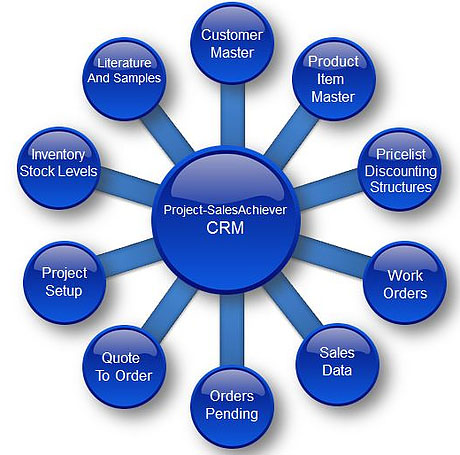
All about system integration
For many businesses, there is considerable commercial value in integrating the main ERP or Business system with the CRM solution. Moreover, delivering key summary financial information in the context of CRM. This gives the users crucial information on which to base business decisions. Financial data lends further depth to the CRM philosophy, allowing an understanding not only of what commissions have been won with a customer but also the final values and overall profitability for a customer or customer group. Thus those in Business Development are armed not only with key CRM information but also with financial history to support decision making.
Many different ERP solutions successfully integrate ConstructionCRM® has been, including:
- ComputerEase
- Timberline
- Quickbooks
- SAGE
- BPCS
- SAP
- Oracle
- Madisson
- Movex
- eRapid & eLogia
- AS400 Systems
- Efacs
- COINS
- IFS
- Exchequer
- System 6000
- Floom
- Access Dimensions
- Avante
- Mentor
- Navision
- BS2000
- Swann
- Many more!
If you would like to learn how clients integrate their Invoicing Systems or ERP solution with ConstructionCRM® CRM and gain ideas on best practice. Then please contact your Account Manager and flag the system you are most interested in. Hence they will be more than happy to arrange a discussion for you.
The basic principles of integration are the same for any ERP or Financial package whether standard or bespoke. A map uses connectors to move the data in one or more directions between systems accordingly. Connectors are live, nightly, or scheduled on a regular basis (e.g. every 10 minutes, weekly, etc), to run.
Integration Methods
Business typically approaches integration in different ways depending on the flexibility required and the skill sets within the business. Most integrations consequently fall into one of two categories – standard or custom integration.
Standard Integration
Standard templates are available for the most common Invoicing/ERP or database platforms. These templates can be used to integrate between ConstructionCRM® CRM and the main business system. These templates also give scope to extend the integration to include other data or master files.
Standard templates are available for SQL Server, Sybase, Oracle, and Sage systems. Moreover, these templates can include proxy tables, remote server links, and SQL Integration Services packages. Moreover, templates allow drawing data from the most commonly required entities of the ERP system into the ConstructionCRM® database. In most cases, this includes Customer, Product & Sales master data and Quotation data is often available in this module is used. If a business that requires additional fields or data to be transferred or manipulated then the template can be quickly extended to include this. This gives a business the ability to quickly & easily customize the integration whilst capitalizing on the template for the bulk of the integration.
With ConstructionCRM® CRM version 4, the ERP system into ConstructionCRM® CRM reads the data directly using the link created by the template. For example, live order information may be displayed on a new tab against the Project to give a read-only view of the current orders for a specific project.
Custom Integration
A business choosing custom integration consequently gains greater control over the level and nature of integration between systems. Therefore skill-sets in the house often dictate the choice of the integration solution. Typically method of integration use tools such as BizTalk or custom scripts, which allow close control over it. Typically the most businesses will import a subset of the following data depending on the location of master data. Also which modules are in use in ConstructionCRM® and the ERP solution.
Integration of Data
Customer master data – typical data available for transfer in standard templates include Customer Account number, Company name, registered/invoice address, phone, fax, web, email, customer classification, sales person, registration number, credit limit & current balance.
Service / Product master data – typical data available for transfer in standard templates includes item code, long description, short description, currency code, cost price, selling price, cost units, sales units, maximum discount, product group/family structure, minimum order and minimum sales quantity.
Invoice or Sales summary data – typically summary data is available for transfer in standard templates, these include Customer account number, sales data grouping reference, currency code, quantity, value, margin, sales year & sales period.
Orders – for some ERP solutions data order data is available for transfer in standard templates typical fields. It include: Order number, Customer account number, order date, created date, created by, sales person, project reference, and quotation reference. Order rows are also available and fields typically available include order reference, line number, item code, cost price, selling price, discount, quantity, and customer reference.
Estimates/Quotes – typical data available for transfer in standard templates include: Quote number, customer account number, quote date, validity date, created date, created by, sales person, project reference. Quote rows are also available and fields typically available include quote reference, line number, item code, cost price, selling price, discount, quantity, and customer/BOM reference
 1-800-915-3597
1-800-915-3597 

